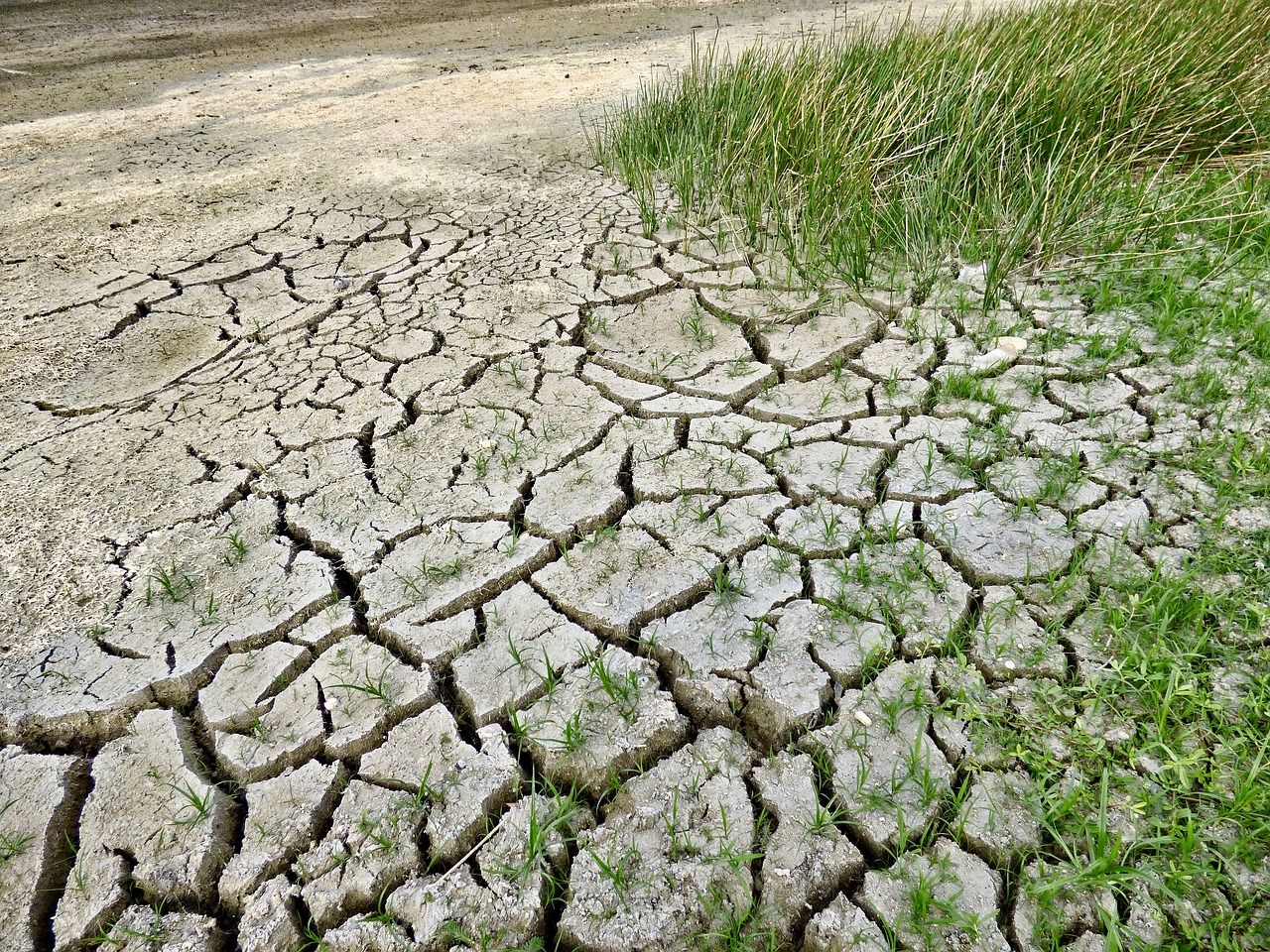
Can you save your parched grass from a drought? In a word, yes. We’ll show you how to manage your lawn before, during, and after a drought.
- How to Manage Drought in Your Lawn
- Lawn Care Before a Drought
- Lawn Care During a Drought
- Lawn Recovery After a Drought
- Drought Resistant Grasses
- FAQ: Lawn Care and Drought
How to Manage Drought in Your Lawn

“Drought conditions are manageable for landscapes — with the right information,” says Kai Umeda, area agent at Maricopa County Cooperative Extension Service in Arizona.
Most important? The homeowner needs to use an efficiently managed irrigation system and the right plants for the location. “If there’s no supplemental irrigation, your turf is going to suffer from that extended drought, that dry period.”
According to the Environmental Protection Agency’s drought monitor, big patches of the United States suffer drought every year. Drought conditions often cause local government agencies to impose water restrictions, with lawn watering the first activity to be curtailed.
Water shortages could make things worse: 40 states informed the Government Accountability Office that they predict non-drought water shortages before 2024.
To make sure you can restore your lawn to its original beauty, follow these steps to manage your lawn before, during, and after a drought.
Lawn Care Before a Drought
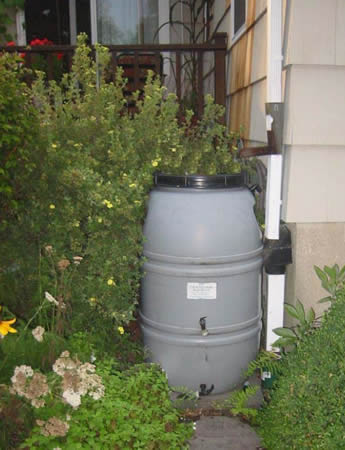
Drought disasters move slowly, so good preparation can minimize losses:
- Set up a rainwater collection system: For every inch of rain, you can collect more than 500 gallons of water per 1,000 square feet of the catchment area.
Systems can vary from simple DIY setups to intricate commercial projects, but the components are basically the same.
What you need:
- Catchment area: Something that captures rainfall, such as a roof
- Transport devices: To move the water to a storage area, such as gutters or downspouts
- Storage container: Such as a rain barrel
- Watering can or irrigation lines: Something to carry the water to wherever you need it
Make sure you research your state’s laws on rainwater collection – some states restrict rainwater collection and use.
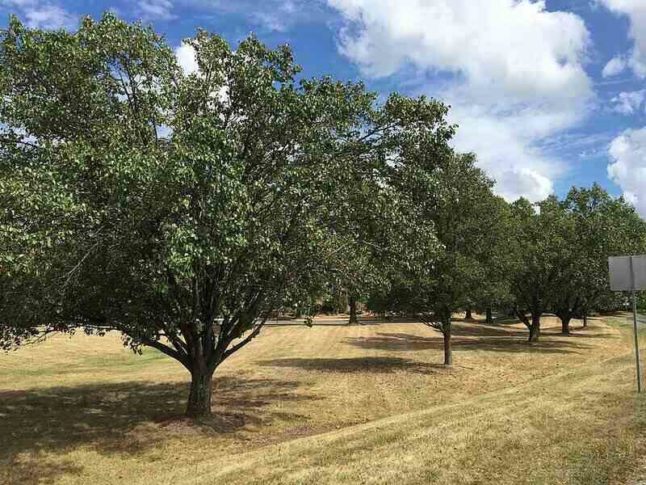
Photo Credit: Farmartin / Wikimedia Commons / CC BY-SA 4.0
- Install irrigation: A watering system saves water and money. Smart sprinklers installed into your irrigation systems are connected to Wi-Fi, allowing you to control watering programs and keep up with weather conditions.
- Grow the right grass: Choose grass varieties with greater drought resistance. Zoysiagrass, buffalo grass, and fescue are among the best grasses for low-water conditions (See chart: “Drought Resistance of Different Grass Types.”)
Consider native grasses. They handle the area’s weather patterns well, consume less water, are zone hardy, and have an Increased resistance to pests, insects, and diseases.
Examples of native grasses for your lawn:
Cool-season grasses: Red fescue, seashore bentgrass
Warm-season grasses: Buffalograss, St. Augustine, blue grama and sideoats grama
Hardiness will depend in part on how well a species absorbs water, and that in turn relies on the roots: How many, how deep, how they branch and how well they grow.
Deep roots improve the odds a lawn will survive drought, but only if water is present at lower soil depths.
- Check your soil: Get the dirt on your dirt. Contact your local Extension service and ask about soil testing.
Grasses grow differently in sandy, clay, or loamy soils. Soil amendments could be added, but think about choosing grasses that naturally do well in your soil type.
- Overseed in late fall and winter:
If your area has snowfall in winter: Overseed with sturdy rye and other grass types that can take hold in the spring.
If you live in a desert area: Prepare the area, plant lawn seed, and water during the late fall.
- Do a water audit: The EPA reports that as much as 50% of the water used by homeowners outdoors is wasted by poor watering or irrigation methods.
A water audit of your lawn can help you figure out what you have, how it is best used, and what you need to create an efficient watering system and schedule.
Many states offer incentives and rebates for water conservation.
- X marks the spot: Look at xeriscaping options to replace the lawn in dry or water-sensitive areas with drought-tolerant grass, native plants, and hardscaping.
Xeriscaping, which means “dry landscape,” will reduce a water bill by 60% or more, increase property value, and create a natural habitat for pollinators and wildlife.
Lawn Care During a Drought
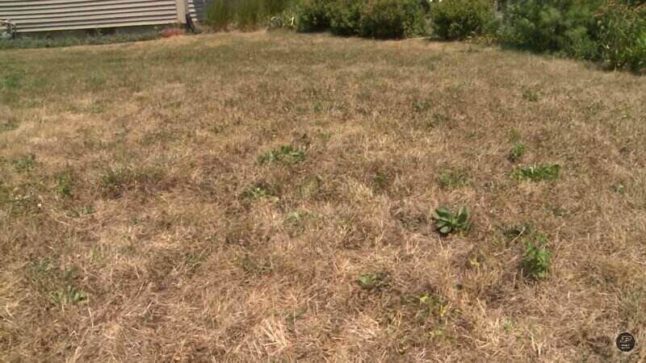
Photo Credit: Purdue Agriculture / Youtube
The drought has arrived and you’re ready to battle this dry spell, but what’s next?
- Monitor the drought: Keep an eye on local conditions. Pay attention to the news and track drought conditions.
- Watch for signs of stress and damage: Lawn grasses that experience stress are still growing, but you might see thinning and browning of areas of the lawn.
Drought damage is the result of drought stress. Lack of water and excessive heat interrupts the plant’s photosynthesis, and the grass is unable to store carbohydrates.
If under stress from drought, grass will wilt and darken in color, and footprints will remain visible after you walk on it.
- Don’t over-fertilize: If you try to fix the brown by hitting it with too much fertilizer it will burn your grass.
Allow your lawn to focus on root growth and absorbing water during periods of drought, instead of trying to dazzle you with its beauty.
- Don’t over-water cool-season grasses: It sounds counterintuitive, but it’s true for cool-season grasses, which go dormant naturally during regular dry seasons.
The University of Illinois Extension explains: “Once cool-season turfgrasses have gone dormant (stopped active growth, turned off-color) it’s best to leave them in that condition rather than watering heavily to cause the grass to green up again.
“Breaking dormancy actually drains reserves within the plant, and if conditions remain dry and the weather is hot, the plant is not likely to replace those reserves.”
What this means for cool-season lawns: Your best course of action is to wait it out, watering enough to keep the grass alive (0.25 to 0.5 inches every two to four weeks) and weeding frequently, as dormant grass invites weeds.
Watering during a drought is generally not an issue for warm-season grasses, which have peak growth in the heat and go dormant in winter, not summer.
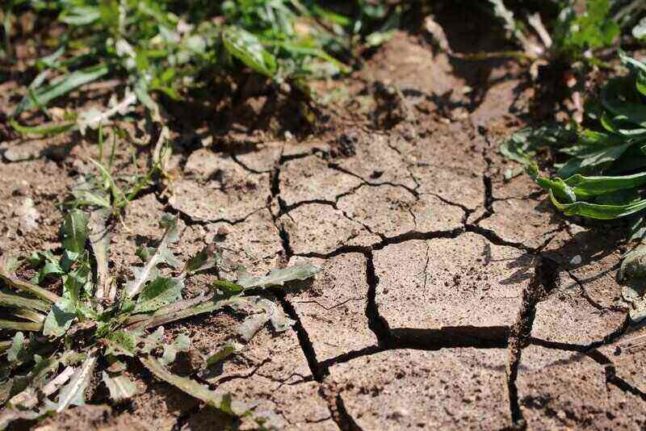
- Mow high: That buzz-cut might make you happy, but it can stress your lawn during a drought. Taller grass will be able to shade its fragile root systems and keep the soil moister by reducing evaporation from the sun.
Here’s what to do:
- Set your mower deck higher, to around 3 inches.
- Start with a sharp blade: Keep mower blades sharp so you do no damage to already fragile grass.
- Limit foot traffic. Compacted soil is never a good idea on lawns, and if the lawn is already parched, high-traffic areas will suffer first. A compacted soil can’t absorb the water that comes its way. Try to limit the trampling, and spot-water areas that show “footprinting.”
- Contact your Extension agent: Agents can help you find a type of grass that is more drought-tolerant and suitable for your area.
“There may not be a turf specialist in…every county, but there are extension specialists within states that can help address the issues,” says Umeda.
Lawn Recovery After a Drought
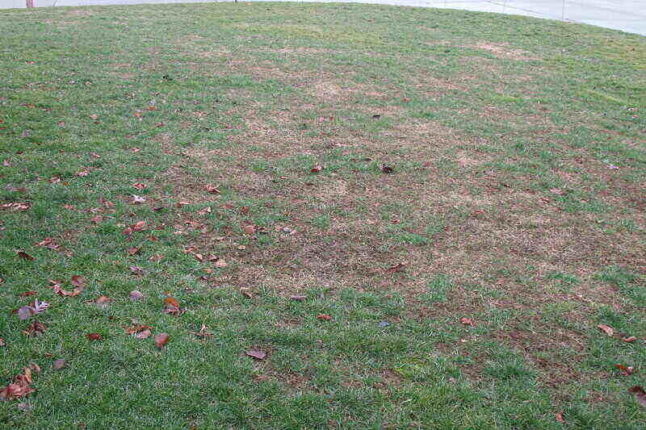
Photo Credit: Tom Britt / Flickr / CC BY 2.0
You and your lawn have survived the dry weather… mostly. Let’s bring that grass back to life:
- Assess the damage: Is your lawn dead or damaged? Do not despair if the grass is brown. Most grass species can withstand three to four weeks of dormancy without dying.
Inspect your lawn closely. Look at your grass at the crown – that is, the base of the plant, just above the roots, where the individual blades emerge.
If the crown is whitish and the new blades are green, the plant is still good. If everything is brown, then the plant is dead, and you have to lay sod or reseed the area.
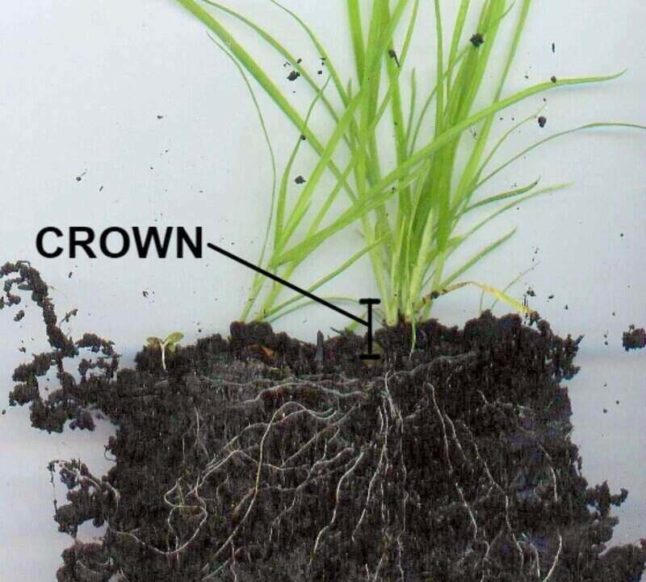
- Aerate: Core aeration allows water, air, and nutrients to access the roots of the lawn. Use this method on green lawns, and follow with regular watering.
Don’t aerate a completely brown or dormant lawn.
- Fertilize carefully: Just as you want your grass to focus on healthy roots and water absorption during the drought, the same is true after a drought.
Follow the manufacturer’s directions when fertilizing to avoid too-rapid growth and burning.
- Water Smart: Follow a schedule and water accordingly. Water deeply during early morning hours, from 4 a.m. to 8 a.m., to a depth of 6 to 12 inches. Don’t “sprinkle” the lawn with frequent but shallow waterings.
- Mulch-established areas: Once your grass is healthy, mow and mulch your grass clippings into the lawn to help retain water and build a strong root system.
Continue to mow high, and stop mowing if you notice the lawn is under stress.
- Create a renovation plan: Come up with a plan for overseeding dead or struggling patches of lawn. Add compost where necessary, rethink the choice of grass or grass seed mix, and select one that is drought resistant. The right grass on your new lawn may help you withstand the next drought.
| Drought Resistance of Different Grass Types | |
|---|---|
| Drought Resistance | Turfgrass Species |
| Excellent | Buffalo grass Bermudagrass Zoysiagrass Bahiagrass |
| Good | Crested wheatgrass Hard fescue grass Sheep fescue Tall fescue Red fescue |
| Medium | Kentucky bluegrass Redtop Timothy Canada bluegrass |
| Fair | Perennial ryegrass Meadow fescue St. Augustine grass |
| Poor | Centipedegrass Carpetgrass Italian ryegrass Rough bluegrass Velvet bentgrass |
| Source: "Turfgrass: Science and Culture," by James B. Beard | |
- Overseed your lawn: The right grass on your new lawn may help you withstand the next drought.
How to overseed:
- Remove weeds: If the bare spots are larger than 6 inches you should weed by hand and re-seed.
- Prepare soil: Expose the soil by raking off most of the debris with a heavy garden rake or a vertical mower and dethatch your lawn.
- Seed: Spread the seed by hand for small spots or use a drop spreader to cover more area.
- Rake: Using a leaf rake, lightly rake to get good seed-to-soil contact.
- Topdress: Using a starter fertilizer, topdress the worked areas. This encourages deeper roots for a healthy lawn.
- Keep moist: Water several times a day for short periods. Once the seeds germinate, slowly decrease the amount of water.
FAQ About Lawn Care and Drought
No, you shouldn’t water every day during a drought. You have two options when drought comes your way:
• Let the lawn go dormant: After the lawn goes dormant, keep it alive (not green) by using 0.5 inches of water every other week.
• Keep the lawn green: In order to keep a green lawn, “Water turf two to three times weekly — deeply, a good soaking, so you don’t have to water daily,” said Aaron Patton, a turfgrass specialist at Purdue University. Apply at least 1 inch of water in total every week.
It’s better to water more deeply instead of more frequently. Water long enough to moisten the soil down to about 6 inches, which is the average depth of a healthy grass-root system. It takes about one inch of water to properly hydrate normal lawns to that depth.
The grass should show signs of new growth within two weeks once rain or watering resumes. However, if the grass is completely dead, you’ll have to reseed or lay sod.
The problem may be caused by a disease, pests, not enough water, or a lack of nutrients in the soil.
When to Call a Lawn Care Pro
If you don’t feel up to delivering the TLC to nurture your grass through a drought, or it’s more time than you can spare, consider hiring a professional.
A local LawnStarter pro can mow your grass and do a lot “mower” to improve the health and look of your lawn.
Main Photo Credit: Jody Davis / Pixabay